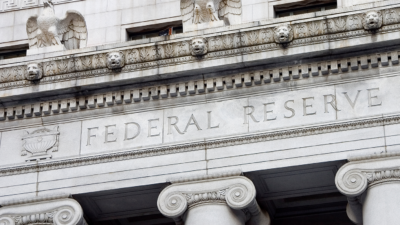Strong economic numbers continue to roll in, signaling the nation shifted into a higher gear during the second quarter and kept pace throughout July. As restrictions were lifted and a greater percentage of Americans became vaccinated, the nation began to emerge from the grasp of the pandemic. Gross Domestic Product (GDP), job growth and spending were up, while the unemployment rate continued downward. In fact, the numbers have been so healthy recently that whispers of Fed tapering and rate liftoff are becoming louder.
While the increase in GDP to 6.5% fell slightly short of expectations, GDP reached a significant milestone as it surpassed its pre-pandemic peak in the second quarter. Moreover, unlike the Global Financial Crisis, which took 13 quarters to return to its pre-recession peak, this recovery only took six quarters – which is the average recovery time over the last 10 recessions. However, it should be noted that the GFC experienced six recession quarters compared to the one-month pandemic downturn.
Substantial gains in consumer spending at 11.8% (annualized) and business investment at 8.0% (annualized) fueled the growth in the second quarter. Combined with the 6.3% growth in the first quarter, the first half of 2021 accounted for the most robust back-to-back quarterly increases since the early 1980s.
During the first quarter, job growth began to gain momentum month after month. Since April, when job growth hit a speed bump and lost momentum, job growth has continued to pick up steam, as July’s job report indicated that nonfarm payrolls had expanded by an additional 943,000 jobs.

Not surprisingly, the service sector continued to lead the recovery, adding 659,000 jobs in July, pushing the unemployment rate down 50 basis points to 5.4%. While significant employee shortages remain, restaurants and bars accounted for nearly two-thirds of the 380,000 leisure and hospitality jobs gained last month. However, despite the strong growth, employment levels are still 5.7 million lower than before the pandemic.
While the rise in inflation has been expected, the 0.5% month-over-month rise in June pushed core PCE to 3.5% year-over-year – the highest mark since the early 1990s. In addition, average annual wages have increased by 4% annualized, a 14-year high. As a result, several Fed board members have sounded the alarm over the latest jobs report that the economy is exhibiting traits of “substantial further progress” and that tapering should begin later this year.
Although vaccination rates have increased over the last two weeks, the seven-day average of daily cases stands at just over 100,000 cases, a nearly 120% increase over the past two weeks. While most businesses targeted a post-Labor Day return earlier in the year, once children were back in schools, expectations for the return to the office are in a state of flux once again. As the Delta variant spreads quickly, particularly in Florida and Louisiana, several notable companies have elected to delay their return even further. Apple was the first company to announce that they were pushing their return to October, as did Microsoft and Wells Fargo. In addition, Amazon recently announced they are delaying their return until January 2022.
Although the economic numbers point towards a vibrant economy, the widespread and rapid rise of the Delta variant will create challenging headwinds in the third quarter. As a result, the U.S. likely reached its peak in the second quarter. Later this month, the Federal Reserve Board is meeting in Jackson Hole, Wyoming, and further guidance on their plans for QE tapering and rate liftoff are expected. However, despite recent calls from a few hawkish board members, it’s likely that tapering won’t begin until early 2022.

 Steig Seaward
Steig Seaward


 Aaron Jodka
Aaron Jodka